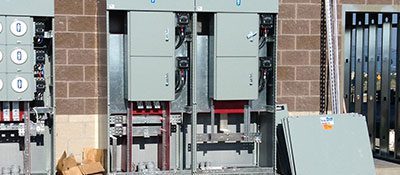When it comes to ensuring the reliability and performance of aircraft engines, the role of an Aircraft Engine Test Cell is indispensable. These specialized facilities are designed to simulate real-life conditions to test various aircraft engines, providing essential data that helps in maintaining the safety and efficiency of air travel. This article delves into the functions and benefits of aircraft engine test cells, shedding light on why they are a critical component in the aviation industry.
Key Functions of Aircraft Engine Test Cells
Aircraft engine test cells serve several crucial functions:
• Performance Assessment: Test cells evaluate the performance of an engine under controlled conditions. This includes testing engine thrust, fuel consumption, and the ability to operate over a range of temperatures and pressures.
• Durability Testing: They assess how long an engine can operate reliably under stressful conditions, helping to identify potential failures before they occur in actual flight scenarios.
• Environmental Compliance: Test cells are used to verify that engines meet environmental standards concerning emissions and noise levels.
• Troubleshooting and Repair Validation: After repairs or modifications, engines are often tested in a test cell to ensure they operate correctly before being reinstalled in an aircraft.
Benefits of Aircraft Engine Test Cells
Utilizing aircraft engine test cells brings numerous benefits to the aviation sector:
• Enhanced Safety: By allowing for thorough testing before deployment, test cells help ensure that engines do not fail during flights, thereby significantly enhancing the safety of the aircraft.
• Cost Efficiency: Identifying issues in the engine at the testing stage can prevent costly repairs and downtime in the future. This preemptive approach saves money and resources in the long run.
• Regulatory Compliance: Test cells help ensure that engines comply with stringent international regulations, which is crucial for the continuation of aircraft operations across global jurisdictions.
• Innovation and Development: Engineers use data from test cells to improve engine designs and make technological advancements, leading to more efficient and powerful engines.
Conclusion
Aircraft engine test cells are a vital part of the aviation industry, providing a controlled environment that ensures aircraft engines are safe, efficient, and compliant with international standards. The functions they serve—from performance assessment and durability testing to ensuring environmental compliance and facilitating innovation—highlight their importance. The benefits, including enhanced safety, cost-efficiency, and regulatory compliance, further underscore why these facilities are indispensable for the ongoing advancement and reliability of air travel technology.
By investing in and utilizing the capabilities of aircraft engine test cells, the aviation industry continues to improve the safety, efficiency, and sustainability of air travel, meeting the demands of an ever-growing global passenger and cargo transport network.


